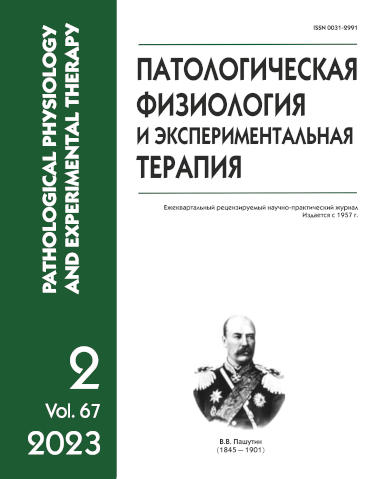A method for noninvasive studying tissue disorders in type 2 diabetes mellitus in db/db mice using laser Doppler flowmetry
Abstract
According to published reports, the LAZMA ST laser diagnostic apparatus has not been previously used for preclinical studies of tissue disorders in small laboratory animals. The aim of this study was to evaluate a possibility of using the LAZMA ST laser diagnostic apparatus in small laboratory animals, C57BL/KsJYLeprdb/+ (db/db) mutant mice, as a new test system for assessing changes in tissues in type 2 diabetes mellitus (DM2). Methods. Pathological changes were studied on a genetic model of DM2 in C57BL/KsJYLeprdb/+ (db/db) mutant mice (n=40). Phenotypically healthy heterozygous mice of the same strain (db/+m) (n=16) were used as a control group. The study was performed with a LAZMA ST laser diagnostic apparatus that was adapted for mice with a device limiting their mobility during measurements. LAZMA ST allows simultaneous noninvasive monitoring of blood and lymph microcirculation along with measurements of tissue activity of mitochondrial oxidative coenzymes. Additionally, blood glucose was measured photometrically with an Accu-Chek (Switzerland) glucometer. Results. The use of LAZMA ST allowed noninvasive, real-time evaluation of disorders in blood and lymph microcirculation and oxidative metabolism (NADH and FAD) in DM2, comparing them with glycemic disorders, and also predicting severity of these disorders in the conditions of DM2 compensation, subcompensation and decompensation. The LAZMA ST device provided simultaneous detection of the onset of lipid and protein metabolic disorders (lipofuscin and porphyrin pigments) to predict severity of the disease. Conclusion. The LAZMA ST device adapted for using in a murine genetic model of DM2 is a new, noninvasive, informative, and safe test system that allows to monitor and predict the dynamics of severity of disorders in microcirculation and tissue redox coenzymes, NADH and FAD.






